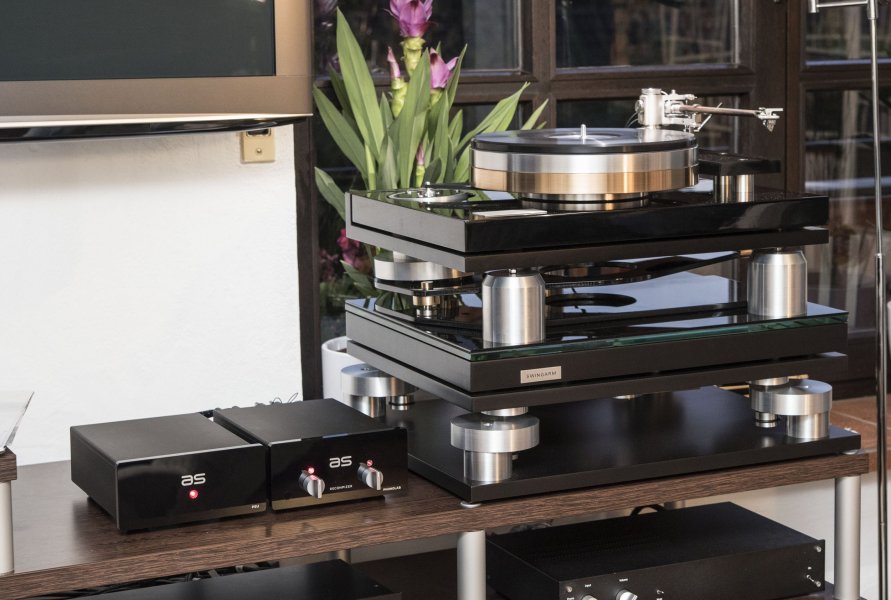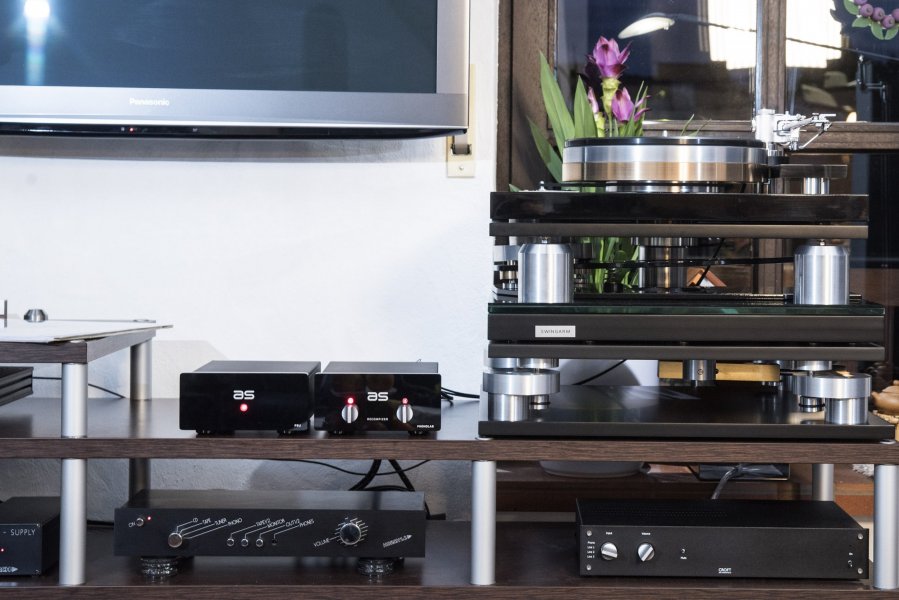Dear friend: the title of your thread is " vital " for the LPs lovers. I don't know what could be changed in the gentlemans opinions that posted by 2014 to today 2020. I tryed to read almost all posts and I can't find out any post that could answer the thread title. Almost all the posts do not explained why that gentleman thinks that the model he posted can be in the top list of " best phono ".
As almost always in audio each one of us have our preferences for different reasons and I would like to write first the " ideal " design characteristics for the title " best phono " out there. Btw, I don't think exist " the best " because that can't exist, no thing in audio is perfect always are some and different trade-offs. So maybe could be better to say contenders for that title but design ideal targets is critical to make any phono stage evaluation. Objective targets because when we go inside each one subjectivity nothing is valid but each one opinion.
For me the functions of a phonolinepreamp first than all are that can achieve an accurated inverse RIAA eq with zero frequency deviation at each phono stage channels ( both channels should have evenly frequency about. ) the other main target is to have active high gain to handle any output level cartridge. As a fact phono stages exist because these two main targets/functions.
We need high gain but we need it along very low noise. These 3 targets are the hart of any phonolinepreamp and the true challengs to any manufacturer because it's really a hard task to achieve all those targets.
I like many phonolinepreamp in the market some of them already mentioned here: FM Acoustics, Gryphon, Spectral, CH, D'angostino, etc, etc. Yes only SS because tubes in this specific function can't do it and I owmned from humble to top design tubes electronics by around 10 years so I'm not speaking of my preferences but audio devices that its technology can in true be nearest to those targets.. This is only an opinion and I think is valid as any of your opinions.
I don't like very much to talk about tubes in phono stages but I will put an example through Aesthetix IO ( I listened the first time at A.Porter house and latter on 3 more times in other systems. ) where they say the unit has active high gain with low noise and yes it has 80db of gain that's a tribute for an all tube design but unfortunatelly failed on noise level that was measured a poor A-weigthed 57db and where the RIAA eq. deviation has ( by manufacturer spec. ) a high 0.5db swing deviation. That frequency response goes even worst because it depends of the control volumen that at different volume position different frequency response.
Now, that was the manufacturer spec but if any one of us makes measures ( example: trhough an Audio Precision system 2. ) things will goes even worst and you can confirm it even with SS top Phonolinepreamps like the ones I linked here.
Now, very important for tube phono stages owners: normally both channels ( tube or SS designs. ) overall measures show that each channel measures different against the other one and not only in the RIAA eq but in overall frequency response, input impedance, output impedance, gain, distortion levels, etc, etc.
All tube owners like to make rolling/rotating tubes for " better " ones and when you make that tube change with different tube specific characteristics to what the manufacturer took in count to his item measure/even its specs you are making " things " really worst it does not matters that those tube changes like it more the unit performance because in true is not that way.
RIAA eq. frequency deviation levels is critical because in theory must be to mimic in inverse way the recording RIAA eq. to we can have a flat frequency response.
Not an easy task even for SS designs because that eq. is not a " delicated " one but goes from around -20db to +20db, this is a huge equalization with several problems not only about frequency response but phase and other issues.
Here I give you measured SS inverse RIAA eq. deviation frequency charts on very well know top SS active high gain phono stages and then we can understand my words about:
https://lh3.googleusercontent.com/K...7w4Jt7YB76_gYRhrCrdGU=w819-h524-no?authuser=0
https://lh3.googleusercontent.com/9...5F42QP3t4NJz6y276pbmI=w819-h582-no?authuser=0
https://www.stereophile.com/images/archivesart/910Vitfig1.jpg
this last one of the 3 links came from the Vitus top of the line ( 60K+ ). You can look that starting at 500hz and below it the Vitus has a really high 20hz RIAA deviaTION OF -1.5db !! Even that J.Atkinson posted there:
"" This massive, beautifully built, two-box phono preamplifier offers almost unrivaled versatility, excellent channel matching, and almost zero RIAA error, but is not as quiet as I would have wished so expensive a product to be. ""
and more critical than that is what MF reviewed with that unit:
"" Its bass extension, control, and weight were granitic. "" how is that when in the bass range the Vitus is really poor performer ! ? ? ? !
Even JA made a comment about on that review:
"" Unfortunately, while the Vitus MP-P201 Masterpiece is well engineered, there is nothing in its measured performance that would indicate why Michael Fremer was so taken by its sound quality. ""
This next one comes from my room/system active high gain low noise phonolinepreamp:
https://lh3.googleusercontent.com/g...Rcb8d3mjRmnhWYmR9zeio=w819-h557-no?authuser=0
This phonolinepreamp in my system measures a low RIAA eq. frequency deviation: 0.011db. I remember that one time we achieved 0.0097db but we could not sustained for more than 48 hours because unit inside developed temperature ( pure class A total dual mono with two independent phono stages one MC one MM and one line stage. Fully balanced/differential and fully discrete design with 4 layers boards and no inside wires/cables. Everything is connected directly to the input(outputs connectors. ), parasitic and some kind of " vibrations " that affected the passive parts as the Teflon Cu caps and the Visay naked Z foil resistors. ASnyway, the issue is that that inverse RIAA eq. is ahuge challenge.
Look, graphic equalizers in the audio market as Accuphase, Soundcraftsmen, Crown, Klark-Teknic, etc, etc. ( I owned all and other ones been parametrics. ) in the best case its control levels by octave or 1/3 octaves can give you a range between: -15db to +15db and the RIAA demands -,+ 20dbs ! !
I have no dog on this battle ( well I have and is SS technology. ) and only saying that does not exist that " best " but only contenders. Btw, what we like ( including me ) is not important if the phonolinepreamp can't achieve those 3 targets or at least stays really near it.
As nearer those main targets as higher each one of us enjoyment of MUSIC. There is no different road to fulfill cartridge signal needs, there is in this specific thread subject only one road to arrives Rome.
Through my first hand experiences in my room/system and several other room/systems is that even than money always helps the MUSIC/sound level quality reproduction depends mainly of our each one knowledge levels not money. Kowledge levels about MUSIC and about whole audio subjects.
One really important personal issue that helps a lot to achieve the highest quality levels is the how high demanding we are of that top quality levels. We have to be our each one challenge by our self targets and very good common sense levels.
Regards and enjoy the MUSIC NOT DISTORTIONS.










